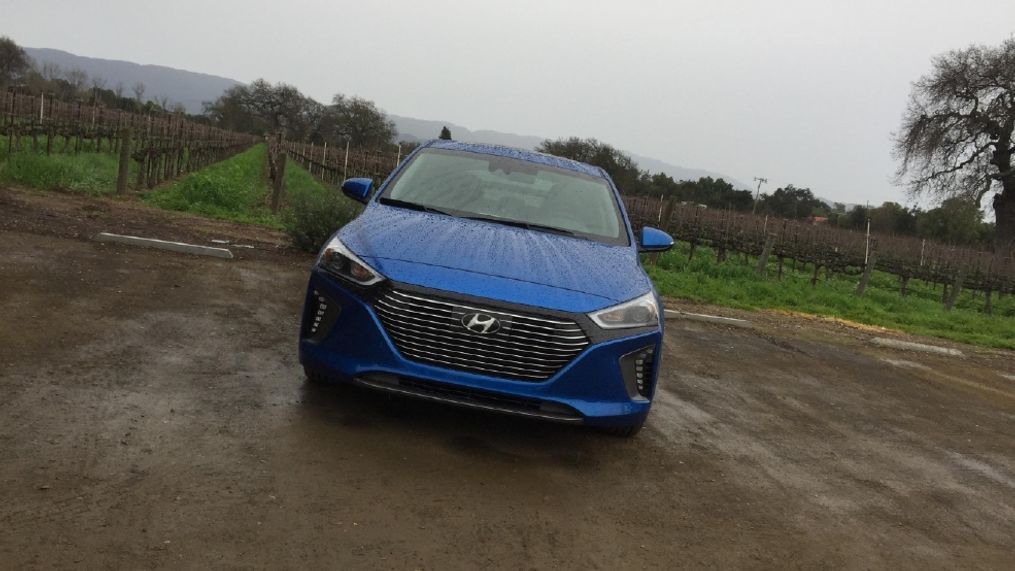5 things to know about the all-new Hyundai Ioniq
Hyundai recently introduced an all-new electrified vehicle: the 2017 Ioniq. While hybrids and electric vehicles are not new, Ioniq has a few interesting features worth noting outside of a regular review.
Ioniq comes in three flavors: hybrid, plug-in hybrid and electric
According to Hyundai, one of the primary barriers to owning an electrified vehicle is cost. So, the automaker set up a three-prong vehicle structure that allows you to buy a fuel-sipper that fits your lifestyle and budget. With base prices of $22,900 for the hybrid to $29,500 for the electric, Ioniq manages to beat the prices of its closest competitors – the Toyota Prius and Nissan Leaf.
Plus, depending on if you need a vehicle that can go distance or just get you around town, the three different levels of Ioniq have you covered – all on one platform.
Coming soon, there might be a fourth flavor. Hyundai has also created an autonomous concept using the Ioniq platform, building in all the Lidar, radar and camera necessities from the get-go --without all the funky antennae.
You can subscribe to your Ioniq
With the launch of the Ioniq Electric in California, Hyundai is testing a new subscription program that will have a term of 36 months and include all the fees, maintenance and charging costs associated with driving an Ioniq Electric. It’ll be rolled into a single non-negotiable monthly fee. Which means potential buyers will know all their monthly costs up front. We still think that “subscription fee” is a fancy way to describe a lease. But unlike a lease, the Ioniq subscription plan comes with unlimited miles.
Standard DC Fast Charge
Most electric cars only come standard with Level 2 charging capability. This is equivalent to plugging into a 240-volt outlet (similar to the outlet used for a washer or dryer). But to get a full charge, this could take 8 or 9 hours, and if you’re trying to take your EV on a road trip, that’s just not feasible.
What you want is the ability to charge at a Level 3 fast-charge station, which will get you back to 80 percent of battery life within a half hour. This requires a special outlet on the vehicle, and most EV automakers charge a fee for that. For example, it’s a $750 option on the Chevrolet Bolt EV and will cost $1,770 on the Leaf. Ioniq includes this for free.
Driver-only HVAC
A vehicle’s heating and cooling system is a major energy drain. For a gasoline vehicle, it translates into lower fuel economy. In an EV, it means your expected driving range gets cut. Significantly. To help mitigate this energy loss, Ioniq has a smart HVAC system that allows the driver to select a “driver only” mode, which reduces the HVAC’s load on the overall powertrain.
Ioniq achieves “Mission Impossible”
During the press briefing, Yong-Seok Kim, the team leader for the Hyundai Eco-Technology System Performance Development Team, said when Hyundai began working on the Ioniq, the team was given one directive: Beat the competitors. The problem is, he said, you don’t know what your competitors are going to create in a seven-year span. The Ioniq needed to be more fun to drive, more fuel efficient and cost less than all its key competitors. In seven years.
“We called this ‘Mission Impossible,’” Kim said.
But this was more of a mission possible as Ioniq Hybrid manages to beat the Prius in fuel economy with an EPA estimated combined 58 mpg, and the EV beats the Leaf’s range by 17 miles. Ioniq is also priced less than its competitors and has more power output.
Want more information? Be sure to check out our full first-look review.
_______________________________________
To find your next new, used or certified vehicle visit www.driveautonow.com today. Local car shopping made easy!




